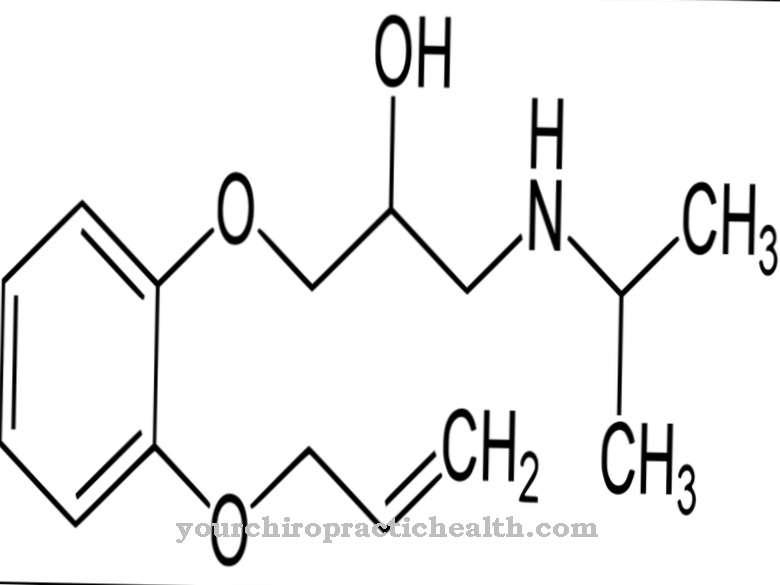Acetazolamide has been used as an inhibitor of carbonic anhydrase for over 60 years. The drug has various areas of application and is used in today's medicine primarily as part of the treatment of glaucoma and various neurological diseases, as well as a preventive agent against altitude sickness.
What is acetazolamide?

Acetazolamide is a carbonic anhydrase inhibitor. It is mainly used in medicine to lower the pressure inside the eyes, to reduce water retention in the body and to have a preventive effect against altitude sickness in mountain climbers.
As a rule, the drug is administered orally, injection solutions are the exception. The effect of acetazolamide is based solely on an inhibition of the enzyme carbonic anhydrase. The two mentioned direct effects of the substance are based on an increased excretion of sodium and potassium by the kidneys and the reduction in the formation of aqueous humor.
Pharmacological effect
Acetazolamide affects, among other things, the kidneys, where a slightly increased excretion of water through the body's urine can take place. At the same time, urine production in the body is increased, which also promotes water excretion.
Acetazolamide reduces pressure in the inner eye, which is why the drug is also used as part of glaucoma therapy. In view of a possible altitude sickness, the effect on the lungs, which are better ventilated by acetazolamide, is also to be rated positively. The administration of acetazolamide also reduces cerebral edema, a side effect of altitude sickness.
However, the drug loses its effect as soon as the patient has acclimatized to the external circumstances. After the administration of acetazolamide, the body absorbs the drug in the maximum dose of 250 milligrams, usually within two hours. In the case of mothers, the drug is also excreted in breast milk, but without any detectable negative effects on breast milk or on the child.
Medical application & use
Acetazolamide is primarily used to treat chronic wide-angle glaucoma, which is popularly known as glaucoma. By lowering the intraocular pressure, the course of the disease and the subsequent treatment are positively influenced.
Edema of any kind, including especially cerebral edema, can be reduced, but not completely cured. Seizure-reducing effects have also been proven with certainty in epilepsy patients, but no reason for this effect of acetazolamide can be established. Another application is inflammation in the pancreas and the fight against pancreatic fistulas.
Acetazolamide is an important part of the prevention of altitude sickness: up to 20% of inexperienced mountaineers suffer from altitude sickness from an altitude of 3,000 meters, from 4,000 meters the proportion increases to up to 80%. With sufficient administration of acetazolamide, the risk of illness decreases by 45% to 55% (the exact value depends on the dosage).
Acetazolamide has a so far little researched effect on migraine patients whose disease is caused by mutated calcium channels, but it seems certain. However, the drug is not (yet) used in active migraine therapy.
You can find your medication here
➔ Medicines for visual disturbances and eye complaintsRisks & side effects
Unwanted side effects from acetazolamide relate to a relative frequency mainly tiredness and dizziness or sudden headaches. In the case of administration as prevention against altitude sickness, taste disturbances as well as nausea and diarrhea are among the more common side effects.
Loss of appetite, vomiting or a permanent sensation of heat can also result from the administration of acetazolamide.Furthermore, acetazolamide should never be used during pregnancy, as this could result in undesirable developments in the unborn child.
Overdosing does not seem to have any severe negative consequences, but only animal experiments are available as a reference point in this context. The potential for interaction with other drugs has so far been little researched; skin reactions and changes in the blood count have been demonstrated only with the use of preparations that contain sulfonamides. Basic caution is advisable if illnesses associated with acidosis are present.



























